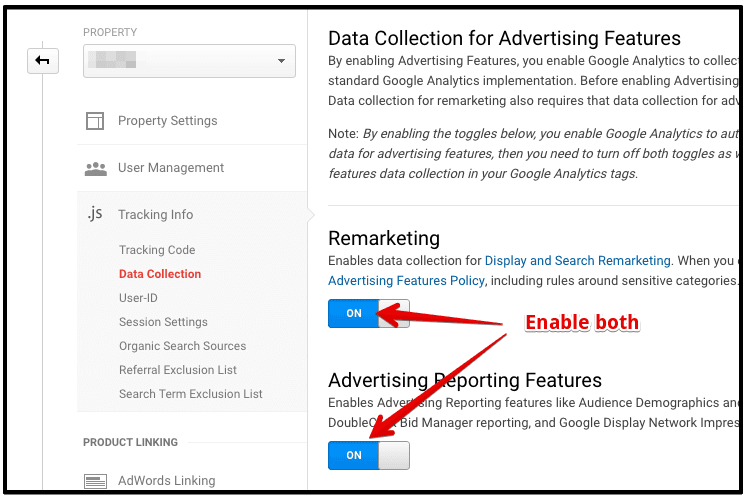A Full Overview to Remarketing In Google Analytics
A Full Overview to Remarketing In Google Analytics
Blog Article
Using Remarketing in Google Analytics: A Comprehensive Overview
Using remarketing in Google Analytics offers organizations a strategic side in getting to out to potential consumers. This overview will drop light on the essential steps included in taking advantage of the complete capacity of remarketing in Google Analytics, leading to improved marketing outcomes.
Recognizing Remarketing in Google Analytics
Remarketing in Google Analytics enables businesses to tactically target customers that have previously interacted with their internet site or mobile app. By leveraging information from Google Analytics, organizations can develop personalized remarketing lists based on individual behavior, such as web pages gone to, activities taken, or details objectives accomplished. This effective tool allows services to re-engage with customers that have shown interest in their product and services, eventually raising the chance of conversion.
Comprehending the various kinds of remarketing approaches is critical for a successful campaign - What Is “Remarketing” In Google Analytics?. Google Analytics uses different options, including common remarketing, dynamic remarketing, and remarketing listings for search advertisements (RLSA) Each kind offers a distinct purpose and can be customized to satisfy details advertising goals
Furthermore, evaluating the efficiency of remarketing projects is essential for enhancing results. Google Analytics provides useful understandings into the effectiveness of different remarketing techniques, allowing companies to make data-driven choices and improve their targeting strategy. By constantly readjusting and keeping an eye on remarketing efforts based upon analytics data, organizations can optimize ROI and drive success in their marketing initiatives.
Establishing Up Remarketing Projects

After establishing target market listings, the next step is to connect Google Analytics with Google Advertisements. By linking these 2 systems, companies can seamlessly transfer target market listings from Google Analytics to Google Advertisements for remarketing functions. This integration permits even more exact targeting and better campaign performance.
Once the accounts are linked, organizations can produce remarketing projects in Google Ads utilizing the audience provides previously specified in Google Analytics. These campaigns can be customized with details ad creatives, messaging, and bidding process approaches to efficiently re-engage with previous site visitors and drive conversions. By adhering to these steps, organizations can take advantage of the power of remarketing to improve their advertising initiatives and raise ROI.
Making Use Of Audience Segmentation Approaches

Predefined sectors in Google Analytics allow you to rapidly examine usual target market groups fresh customers, returning users, or individuals that Web Site completed a certain objective on your web site. Customized sectors, on the other hand, enable you to create special sections based upon particular standards that are essential to your company purposes. Dynamic remarketing listings automatically readjust based on customer behavior, showing tailored advertisements to users that have connected with your website in certain ways.
Studying Remarketing Efficiency Metrics
Upon reviewing the efficiency of remarketing projects in Google Analytics, the analysis of key efficiency metrics supplies important understandings right into target market engagement and conversion prices. By delving right into you can check here metrics such as click-through prices (CTR), conversion prices, price per procurement (CPA), and return on advertisement invest (ROAS), marketers can determine the success of their remarketing efforts. CTR suggests the percentage of individuals that clicked the ad after seeing it, mirroring the ad's significance and appeal. Conversion prices measure the portion of customers that completed a preferred activity, such as making an acquisition, after clicking on the ad. CPA exposes the typical cost sustained for every conversion, assisting analyze campaign productivity. ROAS, on the other hand, evaluates the revenue created for each dollar invested in marketing. Examining these metrics allows marketing experts to optimize campaigns, improve audience targeting, and allocate budgets effectively to enhance overall remarketing performance.
Optimizing Remarketing Methods
When refining remarketing approaches in Google Analytics, concentrating on target market division is extremely important for attaining campaign success. By dividing your audience into certain segments based upon their actions, demographics, or rate of interests, you can customize your advertisements more efficiently to every group. This targeted approach boosts the likelihood of engaging individuals that have currently article source shown rate of interest in your services or products, causing higher conversion rates.
One more crucial aspect of maximizing remarketing techniques is constantly testing and refining your projects (What Is “Remarketing” In Google Analytics?). A/B screening various advertisement creatives, messaging, or offers can aid you determine what resonates finest with your audience and drives the most conversions. By assessing the efficiency of these examinations in Google Analytics, you can make data-driven decisions to enhance your remarketing initiatives even more
In addition, leveraging dynamic remarketing can substantially boost your project results. This attribute permits you to show customized advertisements to individuals based on their previous interactions with your website, showcasing services or products they have actually formerly seen. By supplying tailored material to users based upon their rate of interests and behaviors, dynamic remarketing can help increase interaction and drive conversions.
Verdict
In verdict, using remarketing in Google Analytics is a critical strategy to target individuals who have previously engaged with an internet site. By producing personalized audience listings and utilizing target market division strategies, companies can enhance remarketing campaigns for enhanced conversion prices. Examining performance metrics and continuously maximizing techniques are important for maximizing the performance of remarketing efforts.
Google Analytics supplies various choices, including typical remarketing, dynamic remarketing, and remarketing lists for search advertisements (RLSA)After setting up audience checklists, the following action is to connect Google Analytics with Google Advertisements. By connecting these 2 systems, organizations can perfectly move audience listings from Google Analytics to Google Advertisements for remarketing functions.Once the accounts are linked, services can create remarketing projects in Google Advertisements making use of the audience notes previously defined in Google Analytics.When refining remarketing approaches in Google Analytics, concentrating on audience division is paramount for accomplishing project success.
Report this page